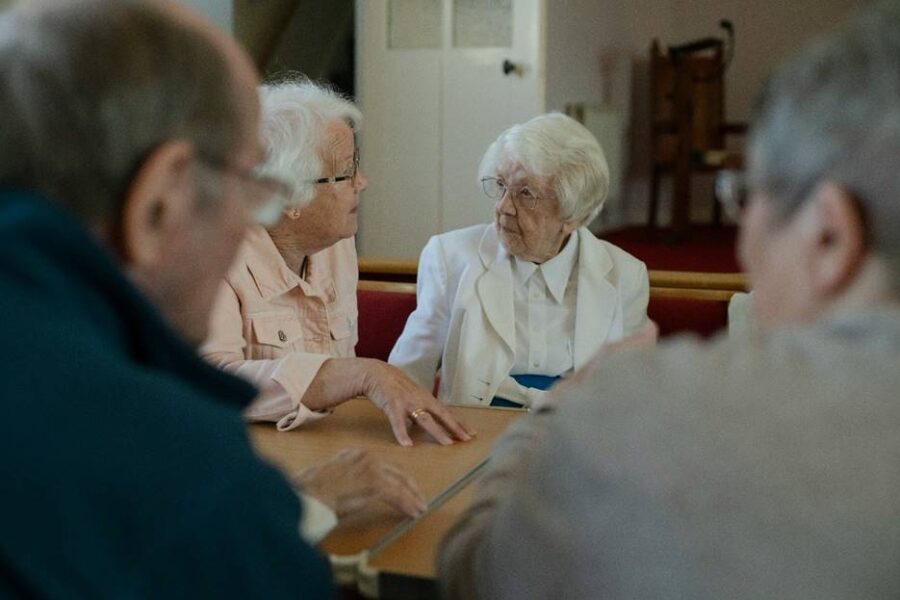Providing care for a senior or person who has cognitive or physical limitations can be a loving and challenging experience. Agitation and anxiety can come on suddenly even if you are doing all the right things. This guide will look at practical in-home help offered by professionals that will give your loved one a feeling of security, and you will feel secure also! Subtle and steady help in your home will mean distinctly defined differences.
The Causes of Agitation and Anxiety
Agitation begins frequently due to unfulfilled needs such as hunger, pain, confusion, or sensory overload. A person may be overheated or hungry; there may be pain present or the person might be bothered by loud noises in an unfamiliar environment with unfamiliar faces. Minor changes in routines can initiate pacing, restlessness, and calling out.
Click https://my.clevelandclinic.org/health/symptoms/agitation for better understanding of its symptoms.
Awareness of patterns is helpful; for example––stop and look at what has occurred just previously to the behaviors reported; and build upon. Treating the cause rather than the symptoms is where the non-medication effective care should come from: compassionate care. Report all observations to care team so that similar responses are offered to everyone involved.
Calming Strategies That Work at Home
Let’s look first at some of the things to consider other than the specific soothing teaching methods. Prepare a safe experience built on relationship first. Speaking slowly in a warm tone of voice using open body language and giving small safe choices built on feeling comfortable and secure. Many of the techniques are easy to prepare and may become a part of everyday life.
- Use reflection and reassurance: reflect what the person is feeling (i.e.: it seems to me that you are upset; I am here with you) and do not argue about facts.
- Reduce stimuli: noise and harsh lights can be decreased further to lower sensory overload. Cleanliness will also help reduce stimuli.
- Stimulate the senses: gentle hand massage, familiar music, warm blanket, and/or pleasing smells can all help slow the breath.
- Redirect the person with a short, purposeful task: folding towels, watering plants, or looking at an album works well.
The Caregiver’s Role in Reducing Stress
Your constant presence is important. Model a calm pace, give one step at a time, and use consistent phrases. Be sure to schedule rest periods and invite a small group of helpers for meals, shopping or short walks to allow for rest and recuperation.
Many families will also greatly benefit by sharing the role of caregiver through Specialized Home Care Services that coach caregivers, provide respite, and customize the approach and schedule according to the special problems of the families.
Using Routines to Prevent Anxiety

The known reduces the fear of the unknown. The habit of a simple daily routine makes easier general relaxation and sharing of the labor of family and professional caregivers. Follow this page to know more about caregiver.
Keep the routine in a visible place and go over it to make the change from one task to another a safe and habitual occurrence.
- Establish very regular times for getting up, meals, rest, and sleep. A chart made with symbols is most helpful.
- Prepare for the transition from task to task gradually giving signals such as “we’ll be ready to eat in 10 minutes,” and use the same signal again and again.
- Pair signals for success of tasks with comforting signals: pleasant music for bathing, a favorite cup or mug for tea, and a sweater before going out.
- Establish healthy pre-sleep activity of movement, fresh air and activity told by short walks or other physical activities. All of these activities will channel energy and increase sleep.
When Professional Help Is Needed
Seek outside help when anxiety increases and the stress of caregiving steadily rises. Signs that professional help is indicated in following areas are:
- frequent sleepless nights
- sudden aggression or withdrawal
- prolonged or increased wandering
- loss of weight
- increases in risks of falling.
Help may be obtained from a physician for screening out and diagnosing possible medical causes such as infection or pain or results of drugs being used. Specialized in-home teams may be available in the area to examine the limitations of the home environments and to give instruction on care of the patient, on home care, and help in plan.
The right people, and a format that is transparent and gentle, allow you to maintain the relationship of dignity, comfort and togetherness at home. The proper people can widen the person’s field of social contacts, allowing for other persons spending time nursing the person at home. Proper agencies will be able to supply skilled companions for a short time over the day or a night, during such difficult periods which recur often, making every day a gradual anchor for gets through every day and communicates with other persons and the home safe for everyone. Keep record of what helps, and revisit the project every few weeks to keep on track.




